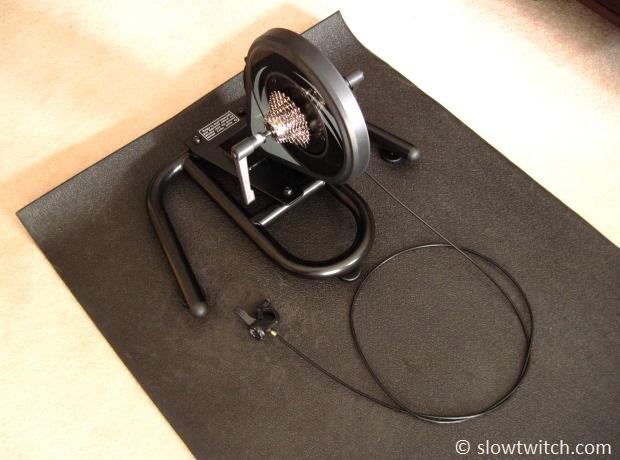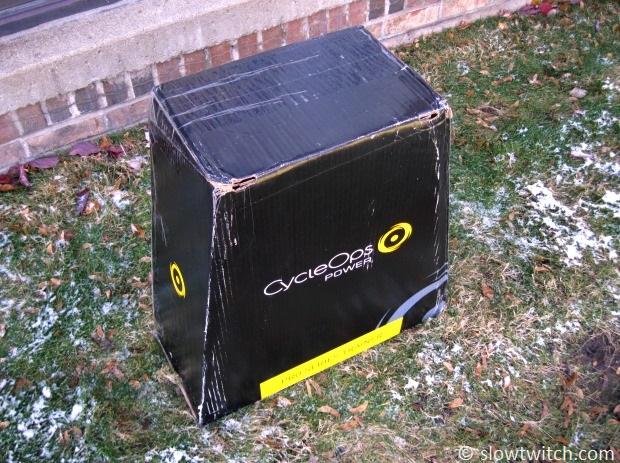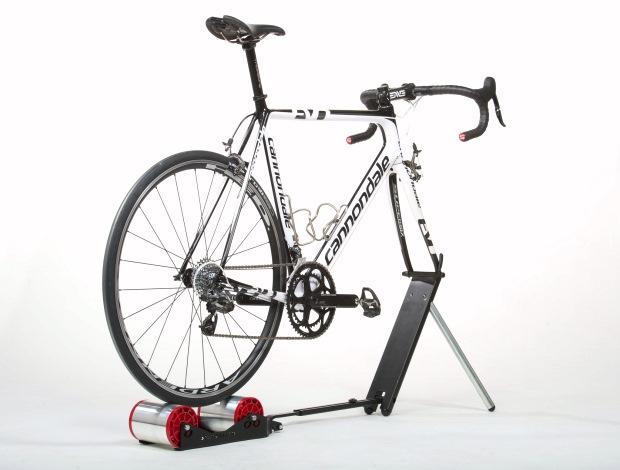Kurt Kinetic Rock and Roll
I’ve been on a roll testing a lot of trainers this winter. What better way to finish up than to review the latest version of the Rock and Roll? Made by Minnesota-based Kurt Kinetic, this fluid trainer is unique in that it pivots from side-to-side with you. If you lean to the left, the entire bike leans to the left. If you lean to the right, it leans to the right. If you play like Alberto Contador and lean your bike every which way during a massive mountain top sprint, the Rock and Roll will follow your every move.
Does it work? Does it not? Let’s learn more.
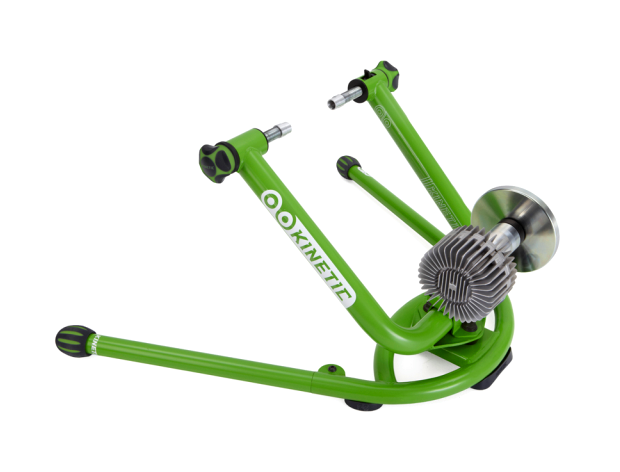
Because I’m ever-boring, let’s get the basics out of the way.
Kurt Kinetic Rock and Roll specifications:
MSRP: $579
Resistance type: Fluid
Weight: 42 pounds
Tire size compatibility: 22 to 29-inch
Frame compatibility: 130mm, 135mm, thru axle
Warranty: Lifetime
As you can see, Kurt has done a nice job with compatibility, allowing a big range of wheel sizes. 650c triathlon bikes? Check. Mountain bikes with 29×2.4-inch knobby tires? Check. Unicycle and clown suit? You decide.
While I have no real way of showing the movement of the trainer, Kurt provided this fancy image to give you a basic idea.
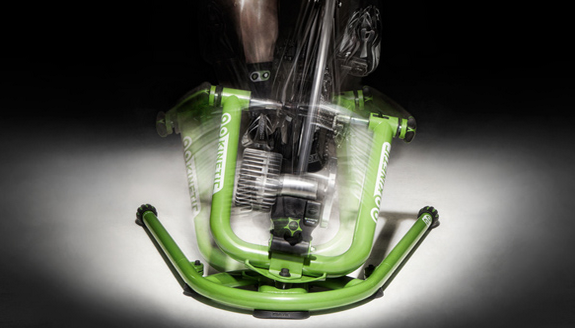
Compared to the older version of this trainer, the new one has some similarities and some differences. First, the ‘guts’ of the resistance unit are the same. I’m a fan of Kurt’s sealed fluid chamber and overall smoothness; it is completely sealed and promoted as being leak-proof.
The main differences are in the design of the frame, which now weighs less, accommodates larger tires, and takes up slightly less space.
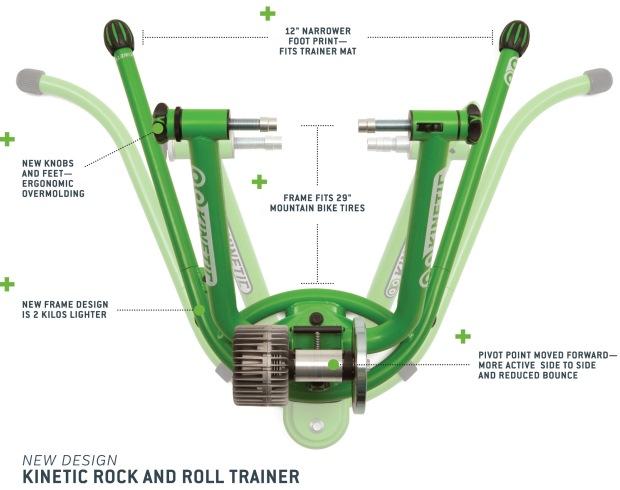
My test unit arrived very well-protected:
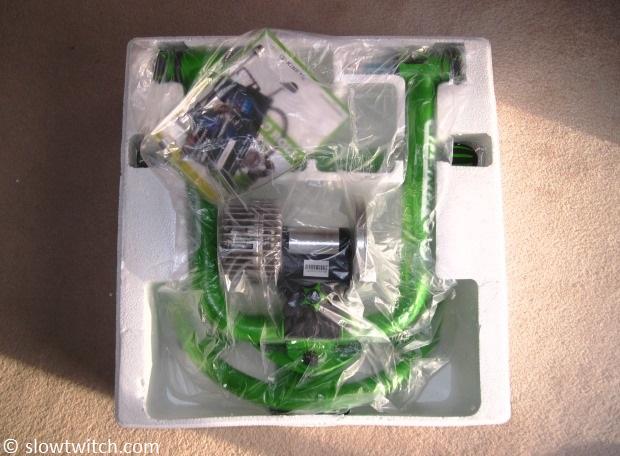
Out of the box, you can see that it does require some basic assembly before you can ride it:
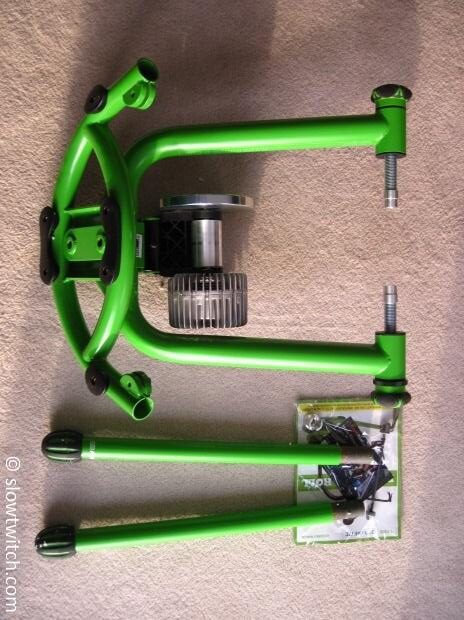
The main assembly step is to insert the legs in to the larger frame and tighten them down. I noticed that mine had already started to show some rust, so I sprayed them down with some light lube for a little bit of sweat protection (Boeshield T-9, to be exact).
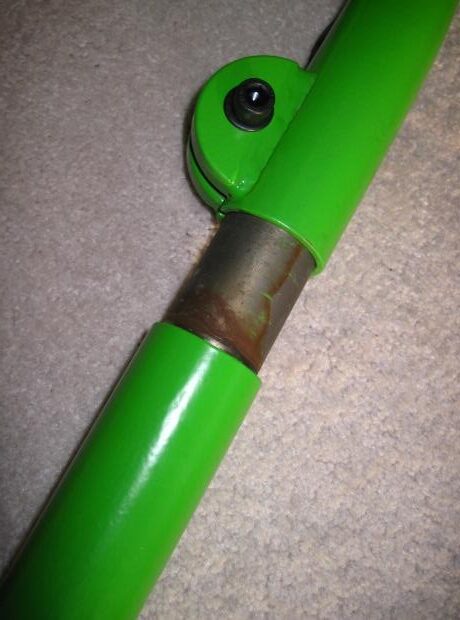
With the legs installed, all you have to do is snug down one 6mm bolt per side:
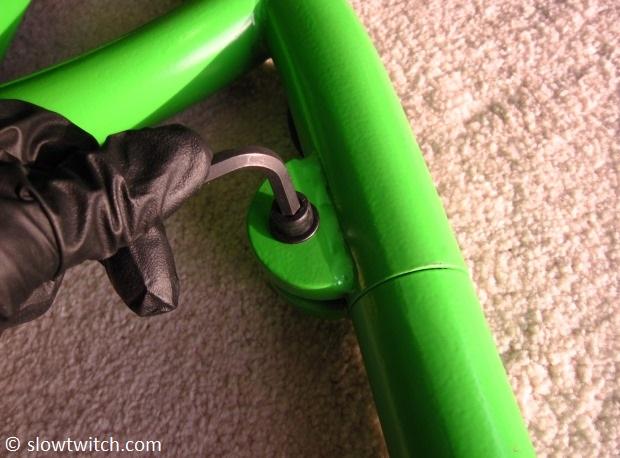
Note that Kurt provides you with a special steel quick release skewer that you must use. This is different than the skewer type that you need for other trainer brands like CycleOps and Blackburn, which has a threaded nut on the opposite side of the QR lever. If you want to use a non-Kurt skewer, they offer a ‘slotted cone cup’ adapter that accommodates other designs.
This is the proprietary Kurt quick release:
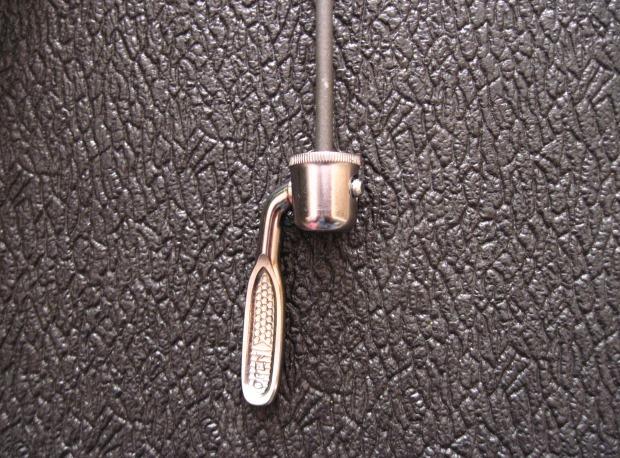
Installation of the bike is straightforward. There are two knobs – one left, and one right – that you tighten down. With the Rock and Roll, it is imperative that you center the tire on the middle of the roller; not doing so can cause the bike to lean to one side.
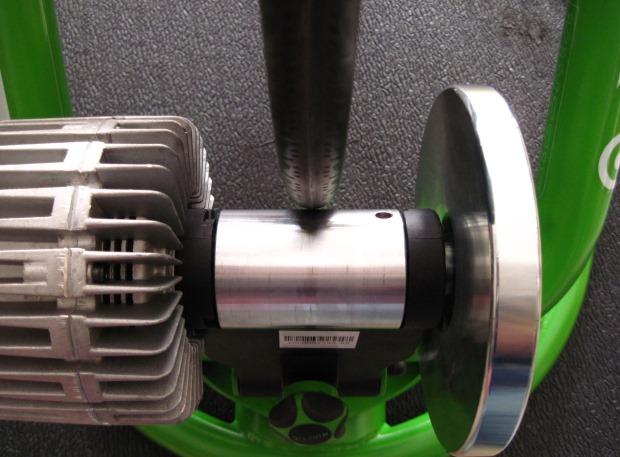
Ride Impressions
Once I got rocking and rolling on the Rock and Roll, how did it work out?
First, the resistance unit lived up to my previous expectations of Kurt. It’s smooth, quiet, and gets it done. I didn’t find that the ride feel was quite as good as my current favorite, the CycleOps SuperMagneto, but it was better than my 11-year-old Fluid 2. Kurt does sell a ‘Pro’ flywheel option that is heavier and results in improved ride feel and momentum.
As expected with a nice fluid trainer, the resistance feels very progressive, and allows everything from easy spinning to full sprints. Resistance increases with wheel speed, so if you want to go harder, just change to a higher gear.
As far as the side-to-side action of the Rock and Roll, I found it to be quite interesting. The frame uses several elastomers that ‘squish’ as you ride. Out-of-the box, I felt that the system leaned too easily – more than you would feel on an outdoor ride. There is an easy solution, however – just tighten down two large bolts to suit your preference:
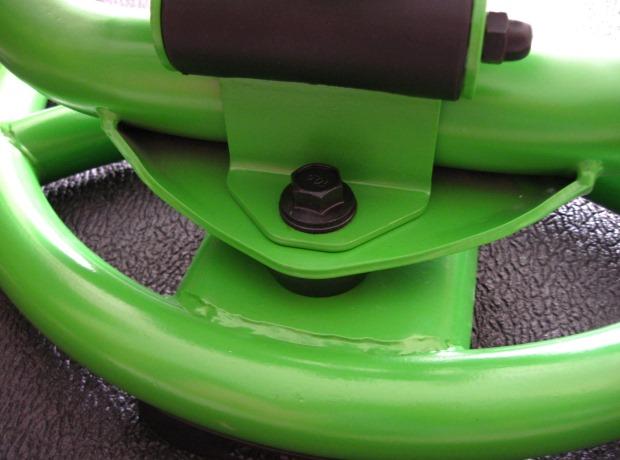
Kurt also sells a special riser ring called the Turntable, for $45. It swivels with your front wheel, aiming to give a more realistic ride. This is the bottom of the Turntable Riser Ring, showing the unique construction
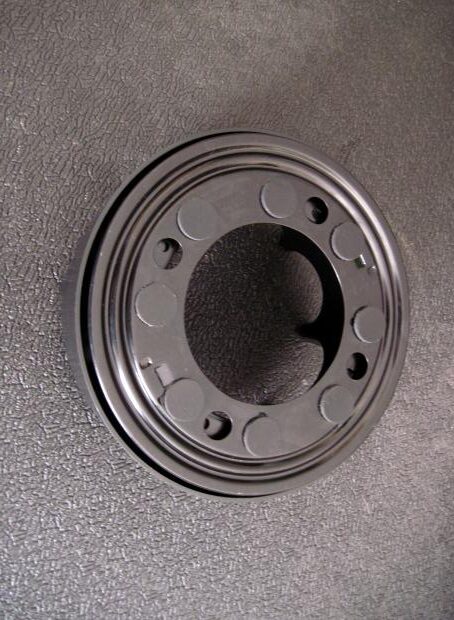
After using both the Turntable and a standard riser block, I personally prefer the standard style. With the bike leaning and the front wheel turning, it felt like the bike was almost too loose. The standard riser felt more like outdoor riding to me.
Also note that Kurt Kinetic offers something relatively rare in the trainer world – compatibility with mountain bike thru axles. While some mountain bikes feature quick release skewers (like road and triathlon bikes), more and more are coming with special 12mm thru axles for increased stiffness. These come in several different styles, because the bike industry runs from standardization and product longevity like the plague. Lucky for us, Kurt does a fantastic job of accommodating almost every bike out there:

Maintenance and Storage
Kurt does caution that the elastomers on the Rock and Roll can squeak if you do not maintain them. They recommend any silicone-based spray or grease. You can generally find both at auto parts stores; silicone spray is often used on things like rubber door seals, while silicone grease is commonly used on electrical connections and disc brake parts.
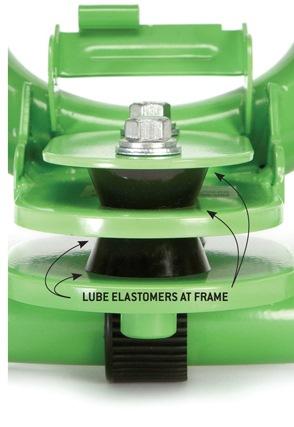
While the Rock and Roll is large, the size has come down from the previous version. The ‘feet’ are 36 inches wide, which fits on a standard trainer mat. Just for a visual comparison, here is the Rock and Roll lined up next to my SuperMagneto:
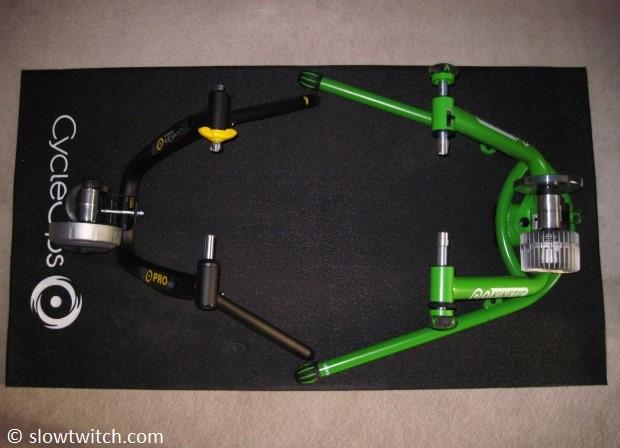
The large frame does work very well; I never felt any instability from the trainer while riding. The only hitch is that the trainer does not fold up quickly like most others on the market. If you want to reduce its size for storage, you must unbolt the legs using a 6mm allen wrench.
Summary
Overall, the Rock and Roll lived up to my expectations. It is very unique and very cool. When coupled with the heavy Pro Flywheel upgrade, I’d venture to say that it’s the most realistic trainer on the market.
What are the compromises? First, it takes up more space than the average trainer, and the moving parts require maintenance. It’s also obvious that the product comes with a premium price, at $579. I’m fine with paying for quality, but I do feel that they should include at least one or two of the standard accessories, such as the trainer mat or riser ring. Buying those two accessories puts the total price near $700; approaching the price of some full electronic trainers.
If you’re looking to bring outdoor riding inside, the Rock and Roll is worth your consideration. Especially for triathletes, trainers lack the inherent instability of road riding. When using aerobars, it is important to maintain shoulder, neck, and core stability; we are all familiar with a few painful Springtime rides as we emerge from hibernation (and trainer riding). Using the Rock and Roll could very well be your ticket to an easier transition and happier early season.



